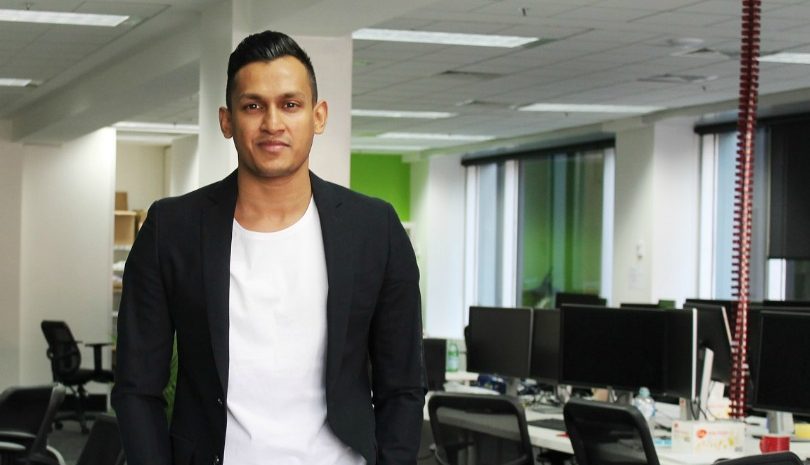Q&A with MyDeal founder Sean Senvirtne

Sean Senvirtne started Melbourne-based online marketplace MyDeal in 2012. One million users now stop by the e-commerce site every month to browse the 25,000 products. The entrepreneur talks about picking up business tips from the biographies of Henry Ford and Steve Jobs and how he sees e-commerce developing in future.
Internet Retailing: What is MyDeal.com.au?
Senvirtne: MyDeal is a marketplace with 1000 suppliers and 25,000 products. We currently have one million people a month visiting the website. I started the business in 2012. Prior to this I had a couple other online businesses. One was nightguide.com.au, a directory for bars, clubs and restaurants, where I was meeting with 400-500 business owners over the course of three to four years. I realised the trouble they were having getting online. We started out building a turnkey solution for retailers to offer their products and services online and it turned into a marketplace for customers.
How has MyDeal grown and changed over the past four years?
People say it has taken four years to get here, but I worked to midnight for the last two days, so with the amount of work put in, it’s probably nine years. It’s a lot like getting punched in the face every day at work, but you learn how to absorb the punches better. You have to learn fast.
We started out with 1000 people visiting a month, then 10,000, then 100,000, and now we’re approaching one million users a month. Our site crashed a few times last year during the holiday period because our infrastructure couldn’t handle the traffic. We have grown 150 per cent year on year and our team went from three to five to 10 and now 30. Scaling is a very fragile process. You need to make sure that when you grow fast, you still meet customers’ expectations. The theory is that you should take your time with hiring.
Is that something you learned to do in your previous businesses?
MyDeal is a completely different kettle of fish [from my previous businesses]. Its growth happened so fast that it forced us to scale, to hire more engineers and customer service representatives.
I’m an entrepreneur from very early on. I always knew how to work, how to put things together. I don’t have any type of degree. But I’ve read many books about business and biographies of business leaders. From Henry Ford, Dale Carnegie and Ted Turner, who started CNN, to Steve Jobs. And it goes to Frank Packer. You read about those people’s journeys and you can learn a lot. And also my knowledge from my previous startups. It’s like playing a piano or riding a bicycle. The more you do it, the better you understand.
MyDeal recently announced a Series A funding round for $5 million. Where are you in that process?
We came to a point [with MyDeal] where we identified key areas where we can scale up fast with some funding. So we are talking to a lot of people at the moment and we have received a very warm response. We could potentially be closing the round in the very near future. From there onward, we would be using those funds to increase our market penetration and let more customers know about our products and operations.
Looking ahead, how do you see e-commerce evolving in Australia?
We have seen quite a bit of change ourselves in the last four to five years. One of the things is how quickly mobile is taking over. Since we started the business it was probably 80-20, desktop to mobile, but today it’s more than 50-50. Over 50 per cent of the traffic that comes to our website is through mobile, and 50 per cent of the transactions are made on mobile. We’re in the process of updating our website in the next two to three months to be even more mobile-oriented and to make the mobile customer experience even better.
What are the must-haves for selling online today?
One of our secrets is how much we use our data. We analyse it every day, weekly, monthly, and we use it to tell stories. Anyone with an e-commerce website has to know what works and what doesn’t. Google Analytics is absolutely essential. You need to know how many people are coming to your website and be able to identify where they are coming from – SEO, newsletter, or social media. And you have to understand what that answer tells you about your customers. Then you can identify the areas where you can make a significant impact with very little effort.
This interview has been lightly edited.
Comment Manually
You must be logged in to post a comment.

No comments